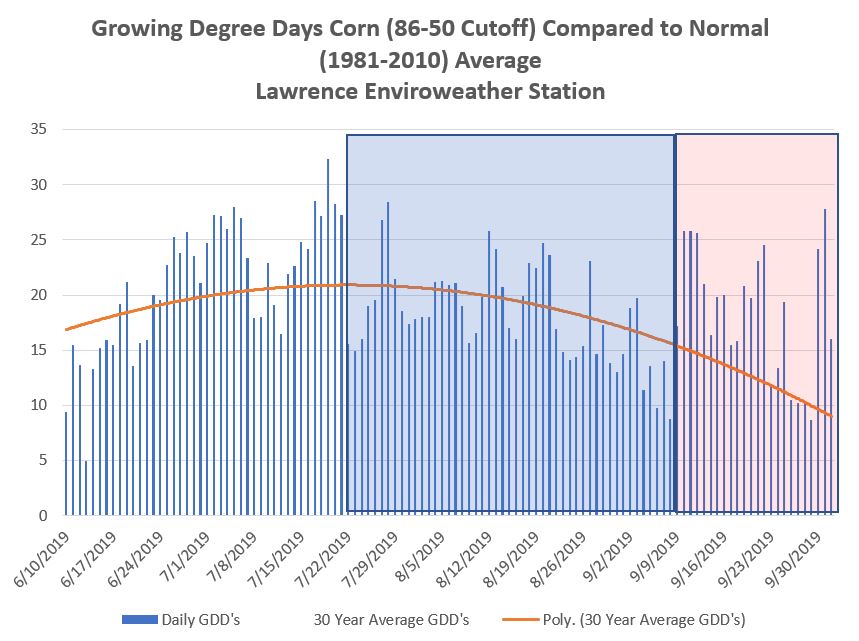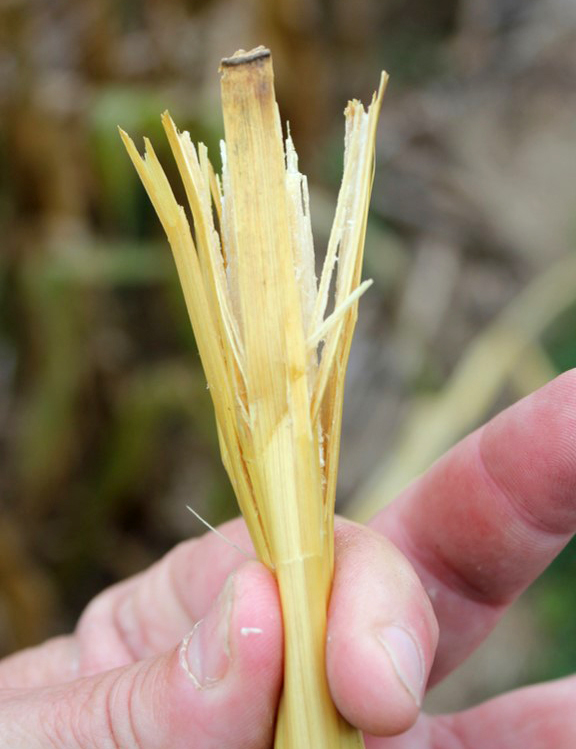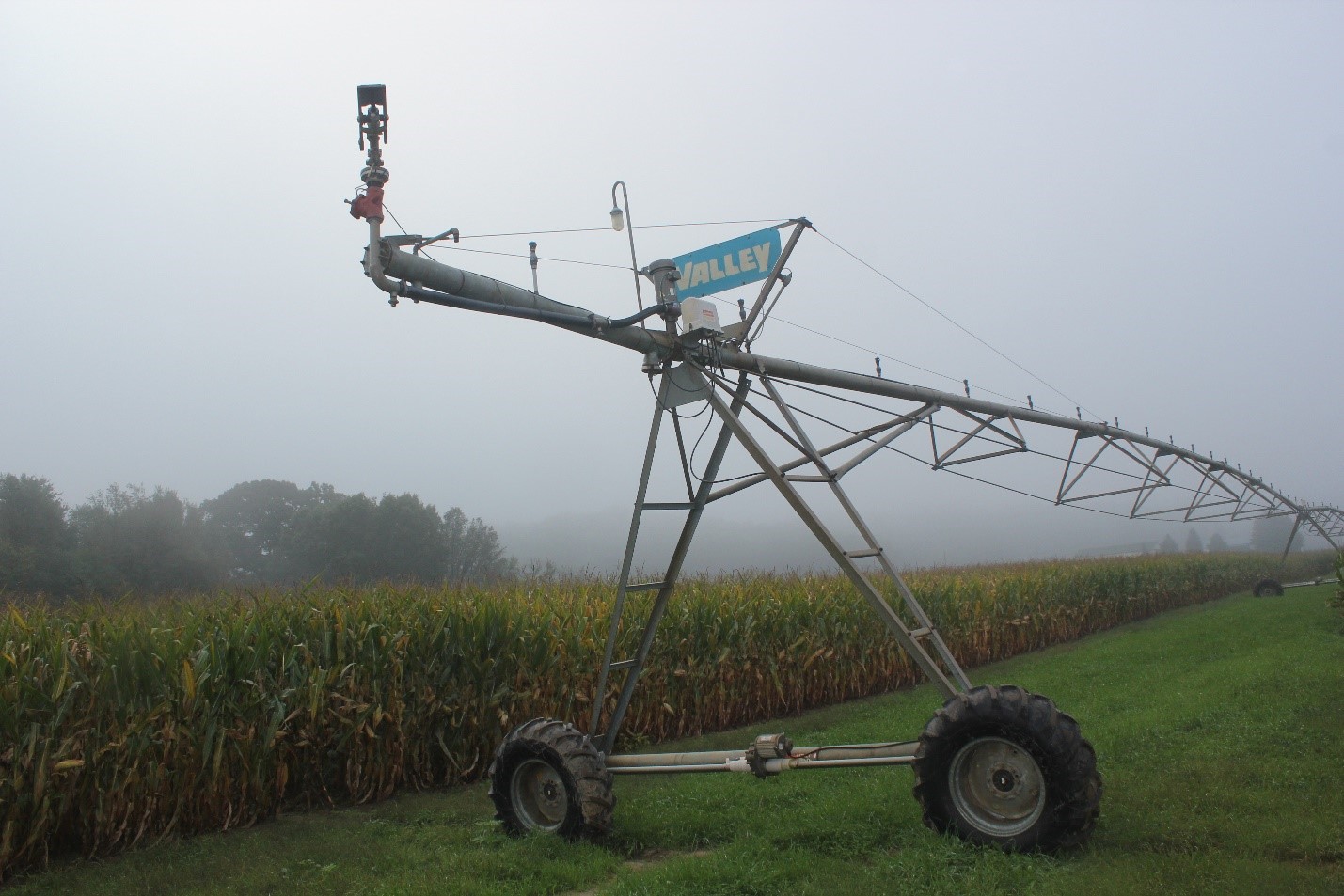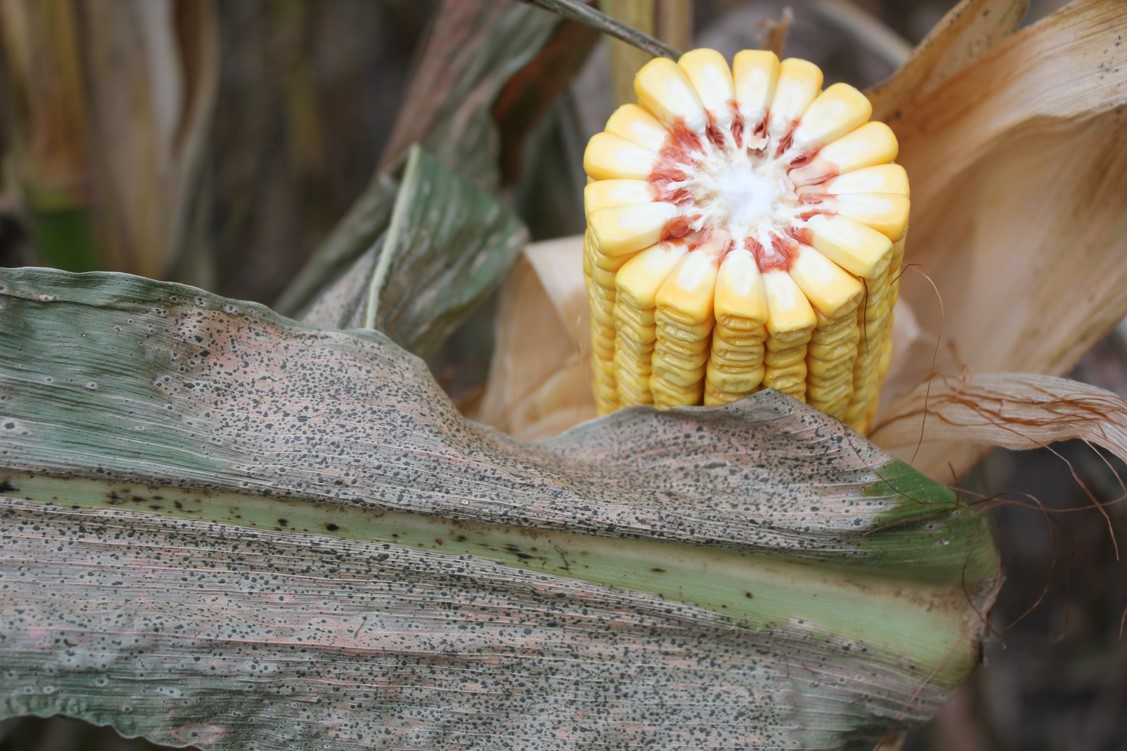Corn struggling to mature in southwest Michigan
Delayed planting, tar spot, drought and a colder than normal August have corn struggling to mature in southwest Michigan.

The 2019 growing season has been a struggle for southwest Michigan corn producers. While the region has less prevented planting acres than most of Michigan, we have 42,900 acres of delayed planted corn as of Aug. 17 in Berrien, Van Buren, Cass, Kalamazoo, St. Joseph, Calhoun and Branch counties. The latter part of the growing season has also not been kind for much of the corn crop in the area. Drought conditions impacted significant areas of southwest Michigan during some portion of July or August. Eric Anderson, Michigan State University Extension field crops educator, reports that most of the region received 50-75% of normal precipitation in July and 25-75% of normal precipitation in August, according to the National Weather Service Advanced Hydrological Prediction Service. September rainfall, on the other hand, was 125-200% of normal precipitation.
Irrigated corn was heavily impacted by tar spot, particularly in Cass and Van Buren counties. The widespread return of the rainfall set the stage for many dryland corn fields to be impacted by tar spot. On top of all this, a colder than normal late July and August delayed corn development on already late planted crops. Thankfully, a return to much warmer than normal temperatures in September helped the crops to catch up.
All these factors have led to substantial acres of corn across southern Michigan to currently be at growth stage R5.5 (half milk line) or slightly ahead, waiting to reach physiological maturity so the grain can really begin the drying process. I recently had the chance to visit with Emerson Nafziger, University of Illinois corn agronomist, about the later planted corn we have in many parts of Michigan this year. He mentioned that the good news is the crop has already packed in greater than 90-95% of the carbohydrates into the kernels by the later R5 (dent) growth stages. The bad news is that it can take an additional 200 growing degree days (GDD) to pack in the last 3% of kernel dry matter to reach physiological maturity. We most certainly will be dealing with wet corn and delayed harvest on many farms across Michigan this fall.

Tar spot has impacted many acres of corn in Cass, Van Buren and Allegan counties in 2019. The most significant impact has been that the disease caused the plants to begin losing green leaf tissue right at the time when temperatures and rainfall were very favorable for completion of the crop.

Frost damage or extreme leaf loss from tar spot at the later R5.75 (three-fourths milk line) or later growth stages should have minimal impact on grain yields. However, tissue loss at earlier growth stages from either situation can play an increasingly important role in grain yield reduction and grain test weight. Keep an eye on the corn maturation process as we move further into October and November. Manni Singh, MSU field cropping system agronomist, has developed an excellent video, “Staging Reproductive Growth Stages in Corn.”
Grain impacted by tar spot should still form an abscission or black layer eventually, so the grain can be run through a grain dryer without excessive shrink. Harvest grain moisture levels are likely to be much higher than normal this growing season for corn that was planted in June.

Tar spot does not create mycotoxins in the corn grain. However, tar spot can reduce grain and silage feed quality. In addition, tar spot can cause affected plants to lose stalk strength. The plants often will scavenge carbohydrates from the stalk to fill the kernels if there is not enough healthy leaf tissue to serve as a source in the later grain fill stages.
Evaluate stalk strength in tar spot impacted fields and prioritize harvest for those fields that are likely to lodge first. I walked a couple of irrigated fields in St. Joseph County this last week where you could easily cause stalks to lodge by pinching them at about 10 to 18 inches above the ground level with your thumb and index finger.
Since the plants are supporting relatively heavy ears, I fear we will find fields that can have a tremendous amount of lodging where tar spot is severe, especially where the plants showed symptoms early. Some of the worst symptoms are found in fields produced under irrigation where extended periods of leaf wetness may have set the stage for infection by the fungus.
Early-infected plants often appear to have prematurely dried down in comparison to less infected plants. These are often good candidates to check for stalk strength integrity. Get into your corn fields, check for the level of tar spot lesions on your plants and evaluate stalk strength. Luckily, the dark-colored stroma often remains visible on the leaves, even after the “green” has left the plant. Moisture level will be very high on some of the later planted fields stricken with tar spot this year, but based on the stalk strength decline I am seeing in some high severity tar spot fields, it will likely be better to harvest them as soon as it is feasible to avoid extreme lodging issues.





 Print
Print Email
Email




